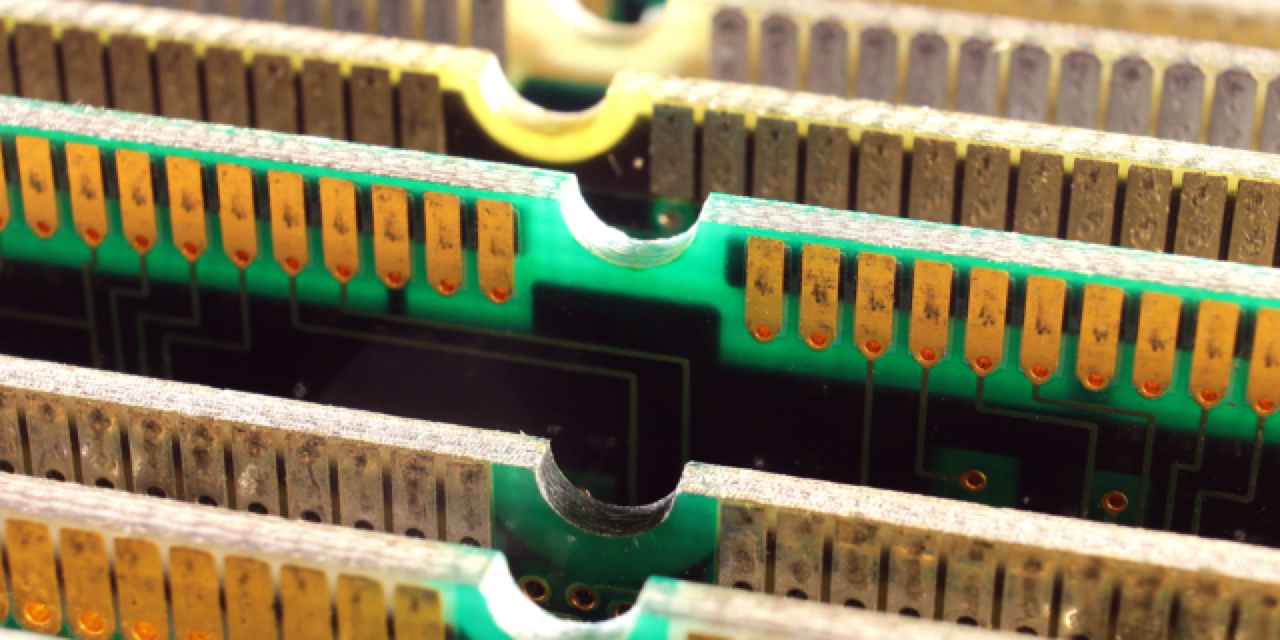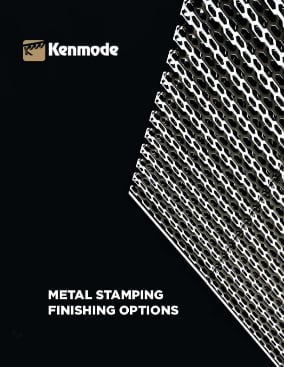A wide range of custom metal stampings require metal plating as part of the finishing process – from large automotive parts to miniature components for electronics, injection molding, medical devices, and other applications. Metal plating for precision stamped parts is frequently used to strengthen electronic connections, but plating also may be used for decorative purposes and for corrosion resistance.
Designing the Stamping for Cost Efficiency
The design of the metal stamping itself needs to take into account the type of metal plating that will be required to enhance the part’s appearance, wear and functionality, as well as the metal material to be used for plating. For precious metals in particular, the cost of the plating material plays a significant role in the overall cost of the part.
OEM engineers can benefit from consulting with metal stamping engineers to ensure that the stamping can be designed to minimize material waste and maximize the performance of the metal plating and the part itself. Metal stamping firms can provide guidance upfront on DFM for the part and recommend the best plating process. For example, if only a small portion of the part will be visible to the end user, only that part of the stamping may need to be plated for appearance purposes.
Types of Metal Plating for Stamped Parts
Pre-plating
Pre-plating treats all of the raw material before stamping, which is typically less expensive than plating each individual part. However, pre-plated material is likely to be affected by the stamping process, resulting in un-plated areas such as edges and sides, which may require further operations to meet specifications.
Spot plating
Spot plating is often chosen when precious metals are required for electrical conductivity to minimize the use and expense of the material.
Post-plating
Post-plating is performed after stamping to improve the appearance of the part or its function in harsh environments. Parts that are plated on a reel-to-reel carrier will have bare areas, where the carrier is cut away from the part, which should be taken into consideration upfront.
Some metal stamped components also require an initial stamping, followed by plating, and ending with another stamping operation. This also is done to reduce the cost of precious metals or to reduce the exposure of bent terminals in the barrel plating process. It can also be an advantage if the manufacturer wants to form and cingulate the parts at their facility to feed into their automation.
Plating with Precious Metals
According to Vince Azzano, director of technical sales for Precision Plating Company in Chicago, manufacturers may specify metal plating to microscopic levels as small as 50 to 100 millionths of an inch when used for electrical connections. He explains that the most popular precious metals for spot plating for electrical conductivity are gold, silver, and palladium (a noble metal in the platinum metals group). “Noble metals don’t oxidize and are good conductors of electricity,” he says.
The metal stamping itself may be made of a non-ferrous metal such as copper, with the precious metal plating only used for the connection point. “These metals are often used for applications that require high reliability for product safety, such as sophisticated electronics in automobiles for collision mitigation,” he adds. In contrast, plating with non-precious materials, such as copper, nickel or tin, may be appropriate for applications that transmit a signal, such as headlights, turn signals, and radio switches.
Metal Plating Processes
The optimal metal plating process is chosen based on the stamped metal material, the type of part, and the location of the plating. For complex stamped parts, plating is typically done with a reel-to-reel operation, particularly for spot plating. Barrel plating is a less expensive process that provides overall plating.
Reel-to-reel plating
Reel-to-reel plating is used for intricate and delicate stampings, which the metal stamper provides to the plating firm on a specially designed strip. This method is best for micro- and spot plating of precious metals to minimize material waste but can also be used for overall plating.
Barrel plating
Barrel plating can handle large volumes of small durable parts economically and quickly. Stampings are placed as loose pieces into a rotating barrel with an electric current and immersed in an electrolytic plating solution, such as zinc or zinc nickel. The solution covers and burnishes the parts as they tumble, which also helps to remove burrs and scale. Barrel plating is often used to prevent corrosion and wear, as well as for aesthetic purposes.
Rack plating
Rack plating provides greater protection for the stampings as the parts are mounted on racks and do not move during plating. Rack plating is preferred for delicate and intricate stampings, as it is more effective at plating complex geometries. Rack plating also produces a higher quality finish, which is critical for industries such as automotive, medical devices, and electronics. However, it is more expensive than barrel plating and may require the development of custom racks, depending on the stamping.
Zinc or zinc nickel electroplating
Zinc or zinc nickel electroplating deposits a thin layer of zinc or zinc nickel onto the part’s surface, which acts as a protective barrier against moisture and corrosion. A chromate conversion coating is usually applied over the plating to prevent rust as the zinc layer corrodes. Zinc electroplating produces a silver/blue appearance but other colors can be obtained. Both zinc and zinc nickel electroplating improve the appearance of the part, increase the lifetime of the metal, and prevent corrosion. The coating continues to protect the part’s surface, even if it is scratched during use. Zinc nickel plating provides higher corrosion resistance than zinc alone. Suitable for a variety of materials, including steel, cast iron, brass, copper, and others, the zinc nickel coating is safe for the environment and wears well in exterior applications.
Aluminum chromating
Aluminum chromating is a conversion coating, primarily used to passivate the surface of an aluminum component, which is converted to the chromate through a chemical reaction. Aluminum chromating is used for corrosion resistance on aluminum parts and for coating applications for electrical conductivity. The aluminum chromate finish also can improve the appearance of the metal and can serve as a good base for applications that require adhesion, such as painting.
Metal Stamped Parts Suitable for Plating
- Automotive brackets and brake parts
- Electronic connectors
- Fasteners
- Lead-frames
- Stamped metal components for insert moldings
- Springs
Sources: Precision Plating Company, Gatto Industrial Platers, Inc., Morgan Ohare Inc., Sharretts Plating Company


